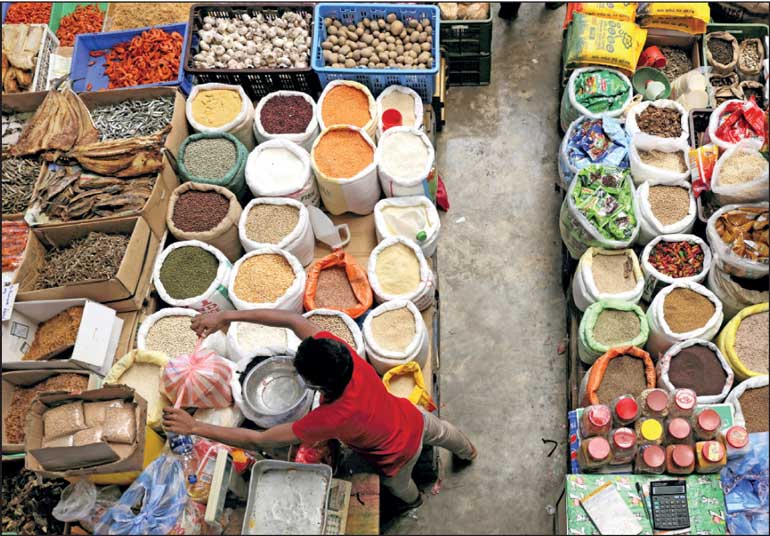Tuesday Mar 04, 2025
Tuesday Mar 04, 2025
Wednesday, 25 January 2023 00:00 - - {{hitsCtrl.values.hits}}

Rome – The index of world food prices dipped for the ninth consecutive month in December 2022, declining by 1.9% from the previous month, the Food and Agriculture Organisation of the United Nations (FAO) reported recently.
The FAO Food Price Index averaged 132.4 points in December, 1.0% below its value a year earlier. However, for 2022 as a whole, the index, which tracks monthly changes in the international prices of commonly traded food commodities, averaged 143.7 points, 14.3% higher than the average value over 2021.
“Calmer food commodity prices are welcome after two very volatile years,” said FAO Chief Economist Maximo Torero. “It is important to remain vigilant and keep a strong focus on mitigating global food insecurity given that world food prices remain at elevated levels, with many staples near record highs, and with prices of rice increasing, and still many risks associated with future supplies.”
Vegetable oil world quotations led the decrease, with the FAO Vegetable Oil Price Index down 6.7% from November to reach its lowest level since February 2021. International quotations for palm, soy, rapeseed, and sunflower seed oils all declined in December, driven by subdued global import demand and prospects of seasonally rising soy oil production in South America as well as declining crude oil prices.
The FAO Cereal Price Index decreased 1.9% from November. Ongoing harvests in the southern hemisphere boosted wheat exportable supplies, while strong competition from Brazil drove down world maize prices. Conversely, international rice prices rose, buoyed by Asian buying and currency appreciation against the United States dollar for exporting countries.
The FAO Meat Price Index in December dropped by 1.2% from November, with lower world prices of bovine and poultry meats outweighing higher pig and ovine meat prices. International bovine meat prices were impacted by lacklustre global demand for medium-term supplies, while more-than-adequate export supplies pushed down poultry meat prices. Pig meat prices rose on the back of strong internal holiday demand, especially in Europe.
The FAO Dairy Price Index increased by 1.2% in December, following five months of consecutive declines. Higher international cheese prices, reflecting tightening market conditions, drove the monthly increase in the index, while international quotations for butter and milk powder declined.
The FAO Sugar Price Index also rose, increasing by 2.4% from November, mostly due to concerns over the impact of adverse weather conditions on crop yields in India and sugarcane crushing delays in Thailand and Australia.
Looking back on 2022
As noted, the FAO Food Price Index average over 2022 was notably higher than the previous year, which on top of large increases in 2021 catalysed significant strains and food security concerns for lower-income food-importing countries and the adoption, inspired by FAO, of a “Food Shock Window” lending facility by the International Monetary Fund.
World prices of wheat and maize reached record highs over the year. The average value of the FAO Vegetable Oil Price Index for all of 2022 reached a new record high, while the FAO Dairy Price Index and Meat Price Index marked their highest full-year levels since 1990.
Discover Kapruka, the leading online shopping platform in Sri Lanka, where you can conveniently send Gifts and Flowers to your loved ones for any event including Valentine ’s Day. Explore a wide range of popular Shopping Categories on Kapruka, including Toys, Groceries, Electronics, Birthday Cakes, Fruits, Chocolates, Flower Bouquets, Clothing, Watches, Lingerie, Gift Sets and Jewellery. Also if you’re interested in selling with Kapruka, Partner Central by Kapruka is the best solution to start with. Moreover, through Kapruka Global Shop, you can also enjoy the convenience of purchasing products from renowned platforms like Amazon and eBay and have them delivered to Sri Lanka.
Discover Kapruka, the leading online shopping platform in Sri Lanka, where you can conveniently send Gifts and Flowers to your loved ones for any event including Valentine ’s Day. Explore a wide range of popular Shopping Categories on Kapruka, including Toys, Groceries, Electronics, Birthday Cakes, Fruits, Chocolates, Flower Bouquets, Clothing, Watches, Lingerie, Gift Sets and Jewellery. Also if you’re interested in selling with Kapruka, Partner Central by Kapruka is the best solution to start with. Moreover, through Kapruka Global Shop, you can also enjoy the convenience of purchasing products from renowned platforms like Amazon and eBay and have them delivered to Sri Lanka.